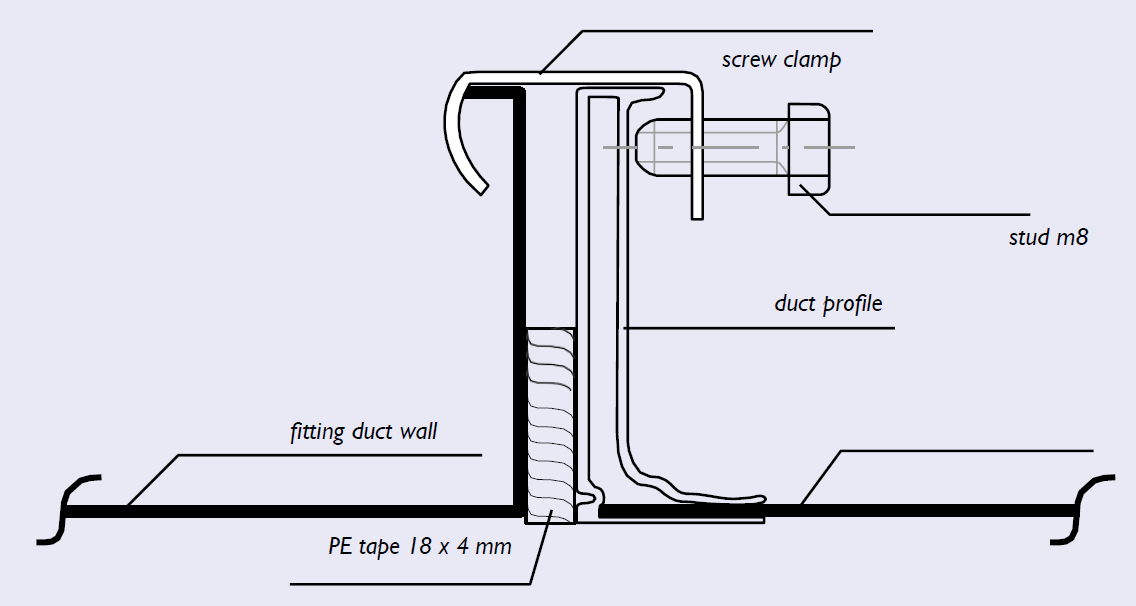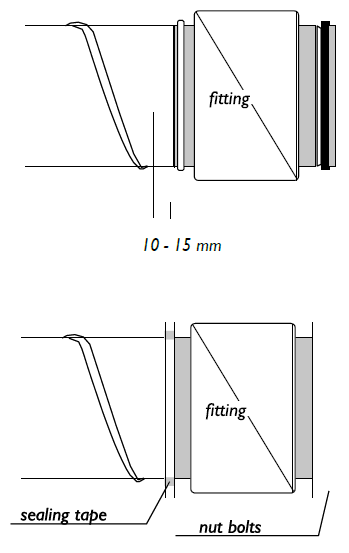3.1.4.1
Assembly instructions for rectangular fittings
Rectangular fittings must be assembled in accordance with the manufacturer's instructions. These assembly instructions meet the requirements of NEN-EN 1505 to 1507. The components must be fixed or suspended so that they form a tight and stable unit with the air ducts. This is done with suspension structures that must have a strength such that the total weight is transferred to the structural suspension points by threaded rods.
The suspension is composed of a lower bracket of Sendzimir galvanised material (or other material if this is specified in the specifications), provided with felt or P.E. tape, with minimum dimensions of 18 x 4 mm, with threaded rods at least M6 directly along the fitting. The distance between the threaded rods is maximum 100 and minimum 30 mm larger than the duct width, depending on the presence of external insulation. The bracket must be mounted at a minimum distance of 100 mm and a maximum distance of 400 mm in front and behind the fitting and must be executed in a profile form (see table below) or in a standard commercial profile of sufficient strength, giving sufficient stiffness.

Because the flanges of the air ducts do not always match the flanges of the fittings, there are various ways of connecting them.
- When the flanges are made with the same profiles, the corners are fitted with a bolt and nut connection (at least M6 x 20) and/or with a profile inlength and width. A sealing band with closed cell structure must be fittedbetween the flanges, with minimum dimension of 18 x 4 mm, with the strap tensioned or overlapping at the corners (see 2.1.1.3);
- If the flanges are not made from the same profiles, the angles will be provided with a bolt + nut connection (at least M6 x 20) and withscrew clamps at a maximum distance of 500 mm.
A closed cell sealing tape with minimum dimensions of 18 x 4 mm must beapplied between the flanges, with the tape passing through the cornerswithout tension or overlapping at the corners.





